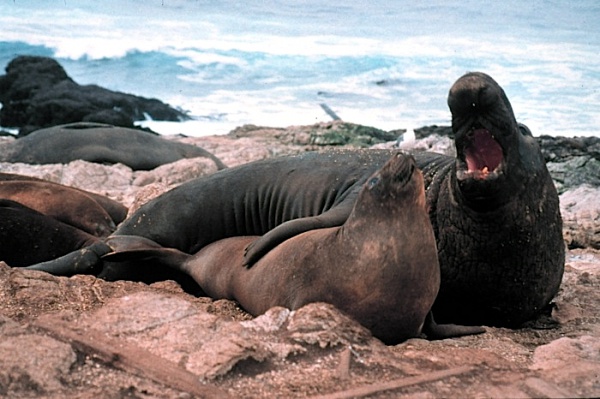Facts About Elephant seal
Elephant seals are captivating marine mammals belonging to the genus *Mirounga*, divided into two species: the northern and southern elephant seal. Remarkably, both species were nearly driven to extinction by the end of the 19th century due to extensive hunting, but they have made a significant recovery since then.
The northern elephant seal is found along the Pacific coasts of the United States, Canada, and Mexico. In contrast, the southern elephant seal inhabits the Southern Hemisphere, residing on islands such as South Georgia and along the coasts of New Zealand, South Africa, and Argentina.
These seals are part of the Phocidae family, often referred to as "true seals." They lack external ears and have reduced limb size, which is characteristic of this family. Elephant seals spend most of their lives underwater, foraging for food. Males are particularly notable for their large proboscis, resembling an elephant's trunk.
One of the most impressive features of elephant seals is their diving ability. They can hold their breath for over 100 minutes and dive to staggering depths of up to 2,388 meters. They possess several adaptations that facilitate this, including a large volume of blood to store oxygen, specialized heat exchange systems, and the ability to slow down their heartbeat and metabolism during deep dives.
During the breeding season, dominant males compete fiercely for the attention of females. After mating, females give birth and nurse their pups for about 28 days. The average lifespan of a northern elephant seal is around 9 years, while southern elephant seals can live up to 21 years.
Every year, elephant seals undergo a molting process where they shed their outer layer of hair and skin over about a month. They face natural threats from predators such as great white sharks, orcas, and cookie-cutter sharks. Human-related threats include entanglement in marine debris and interactions with fisheries.
Despite these challenges, both species of elephant seals are currently listed as "Least Concern" by the International Union for Conservation of Nature (IUCN). Thanks to ongoing conservation efforts, their populations continue to be protected and monitored.

 Mexico
Mexico